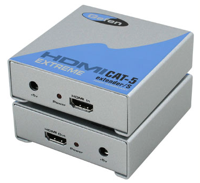With the rise of higher speed wireless networking technologies, from 802.11g high-speed wifi to the pervasiveness of bluetooth and its kin with short-range wireless communications, it’s becoming more and more difficult to determine whether it makes any sense to pay to have Ethernet “cat 5” wire installed in a home or office. There are more considerations than just cost, however, including security and future flexibility. Making this decision yourself? Then read on…
In today’s world it seems as though there is a wireless solution for just about everything. You can transmit Audio, Video, Cellular, Infrared Commands, Radio Frequency Commands, and of course the Internet all over an invisible connection. You can even send an HD quality picture with digital surround sound over the air now. So why would you invest money and time in putting wire into your home or office?
For starters, a wired connection is still the most reliable, secure and optimized connection you can have despite all of the wireless technologies available. A wireless connection is more prone to errors, unexplained interference issues and definitely is more susceptible to hackers than any wired connection will ever be.
Nowadays wire is generally cheap and easy to come by. Standards have developed within the market that allow multiple pieces of equipment to all be connected with common wire. The most common wire found in people’s homes and offices these days is either Coaxial (RG6) or some type of network wire (CAT3, CAT5, CAT6) etc. Typically Coaxial wire is the wire you would send video signals over (TV, Surveillance) and CAT# wire is what you would commonly find your phone or computer plugging into. However, what you may not know is that there is a lot more you can do with those wires.
There are devices in the market called baluns.
They vary in how they look, but here’s a picture of one I use frequently:

A balun allows you to use those wires for a whole lot more than what most people have come to know about them. By attaching the right set of baluns to each side of a CAT5 wire you can transmit just about anything you want as long as it’s under about 330 ft. For example, maybe you want to plug in your Ipod in the kitchen, but you want to be able to access it from your computer, which is all the way across the house. If you purchase a set of USB Baluns (for around $70) you can plug in on one end to the iPod, run the cat 5 to the connection in the wall, and access your iPod from anywhere in the house. CAT5 wire can also be used for HD Video, HD Audio, Analog Audio, Surveillance, Infrared, any other type of video signal, and of course the normal phone and data use.
The same principle goes for Coaxial wire except that there are no baluns available for coaxial wire (though Wikipedia seems to think that there are). However even using the raw wire and a set of Baluns, you can use CAT5 cable for sending a signal from an Infrared receiver, or to a Subwoofer. Basically, you can transmit any type of Video signals over CAT5, and some audio applications as well. The possibilities really are endless with the use of these types of wire, and you don’t experience many of the issues that you might with wireless (like I commented on above).
Of course, wireless provides options when a wired connection isn’t possible. But if you have the opportunity to plan and install wire in new construction, I would absolutely put CAT5 or CAT6 wire everywhere you can. In the worst case scenario, you waste a little money having wire in the wall that you may never use. But, if you don’t put the wire in, and for some reason you need it later down the road, the cost and inconvenience to add the wire can be extraordinarily painful compared to the minimal cost to install it in the first place. If you are unsure about where you might need wire down the road, I would also encourage you to put in some kind of flexible conduit within the wall. This will allow you to pull wire to key places later on if needed.
Technology will inevitably continue to change; and the frequency of changes seems to be exponential. By applying some of the ideas presented in this short article, you should be more prepared to take advantage of most of these changes without compromising quality. A wireless connection can, and often does create unforeseen complications within a home. I believe a wireless option should always be considered secondary to a wired connection.
My conclusion? You should absolutely use and plan for CAT5 or CAT6 wire everywhere you can in new construction.
This article was written by Brian Kraft, CEO of Lighthouse Technologies, which brings unique technologies into homes and workplaces.

I totally agree with that information.
Now a days most computers come in with a 1Gbps (1000Mbps) ethernet, and 1Gbps switches are cheap.
if you have a big house you can have cheap access points in both ends and have a seamless network, otherwise you couldn’t without wires (ethernet cables).
I wish I had cat5/6 in my apartment…
it’s so expensive to install now.